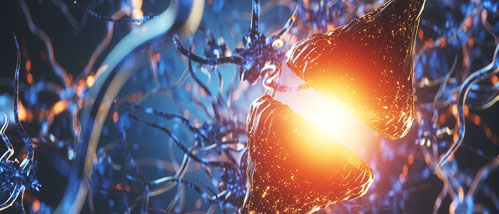
Did you know that every day we produce substances in our bodies that are very similar to drugs of all kinds? These neurotransmitters perform important functions, but dopamine, serotonin and endorphins can also give us all sorts of feelings that the most potent drugs also imitate. How does that work? What do drugs do to you? In this article we dive into the effects of different types of drugs such as XTC, THC and PCP and we look at the similarities between drugs and neurotransmitters.
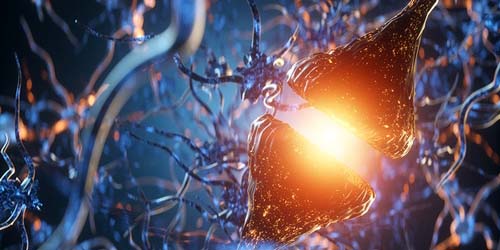
In this article:
- What are Neurotransmitters?
- What is the function of Neurotransmitters?
- Pharmacodynamics - How do Drugs Work?
- Dopamine, Serotonin and drugs – This is how your body works
- Types of drugs and the way they work
- Conclusion: Neurotransmitters are natural drugs
What are Neurotransmitters?
Neurotransmitters are signaling substances that provide signals with chemical information in the brain and in the body. These substances make us respond to impulses from outside the senses or from inside the nervous system.
Neurotransmitters: the drugs you are born with?
Because these signaling substances are so similar to drugs, we think it is important to devote an article to them. They can have a stimulating effect such as glutamate, but also an inhibiting effect such as GABA.
What is the function of Neurotransmitters?
Your body contains a whole range of neurotransmitters. To make it easy for you, we have created a cheat sheet for a number of neurotransmitters. This cheat sheet is by no means complete, as a whole book could be written for each substance. Let's see what the substances do to your brain and feelings.
Dopamine - Dopamine is often referred to as the substance of reward, but that is not quite right. The role of dopamine in your brain includes chasing things we don't have. You get a natural dopamine boost when you look forward to something or work on something that has a purpose. High levels of dopamine lead to agile, impulsive and consumptive behaviour. Low levels can cause indecision, lethargy and depression, among other things.
Serotonin - Serotonin makes you happy or satisfied with the here and now. A high level of serotonin provides a feeling of satisfaction and suppresses fear, aggression and sadness. A serotonin deficiency causes all kinds of emotional discomfort and can be a cause of certain depressions.
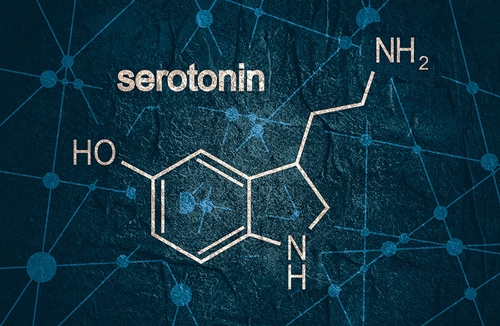
Norepinephrine - Also called noradrenaline. It makes the body and mind ready for action. When you have a lot of norepinephrine in your brain, you are alert, excited and your memory works better. You also feel agitated and stressed. This substance is at its lowest level when you are asleep and rises when you are awake.
Melatonin - Melatonin tells you it's time to go to sleep and your brain only produces it when it's dark enough.
Anandamide - The substance that causes the bliss felt by athletes after long periods of exercise. It causes the “runner's high”.
GABA - Gamma-aminobutyric acid inhibits the action of other neurons in the brain. Too little GABA can lead to anxiety, insomnia, irritability and, in extreme cases, to epileptic seizures. A lot of this substance has a calming effect.
Glutamate - Nerve cells use glutamate to transmit signals to other cells in the body. The balance of glutamate in the brain is important, because both too much and too little glutamate in the brain can cause damage. It has the strongest uplifting effect on the central nervous system.
Endorphins - Are a group of neurotransmitters with analgesic properties. They are released during physical exertion, pain, love, orgasm and even spicy food. Too many endorphins give you the feeling of euphoria and total relaxation. Too few endorphins make you sensitive to discomfort and cause you to avoid risks.
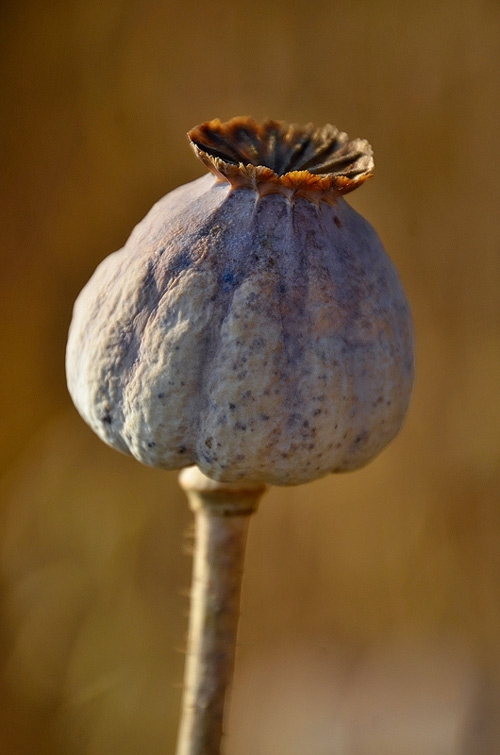
Opiates such as heroin and morphine can be extracted from the sleep bulb, a special kind of poppy. Opiates bind to opioid receptors and block pain, but also produce a feeling of bliss through endorphins.
Acetylcholine - If norepinephrine puts you in a state of alertness, acetylcholine acts like a torch in the dark for the attention span. It focuses your attention on things that are essential at that moment. When the concentration of these two substances is high, you enter a state of flow in which you can study with maximum concentration. This state often does not last very long. Acetylcholine deficiency causes a severe form of muscle weakness.
Histamine - Histamine regulates sleep/wake processes, among other things. It also makes you alert in unfamiliar situations. Too much histamine can cloud your thoughts, making it difficult to concentrate and retain information. A reduction in histamine has sedative and anaesthetic effects.
Taurine - On paper taurine is not (yet) a neurotransmitter, but it has all the properties of the neurotransmitters above. Taurine has an anxiety-inhibiting role in the brain and reduces the activity of other cells, just like GABA.
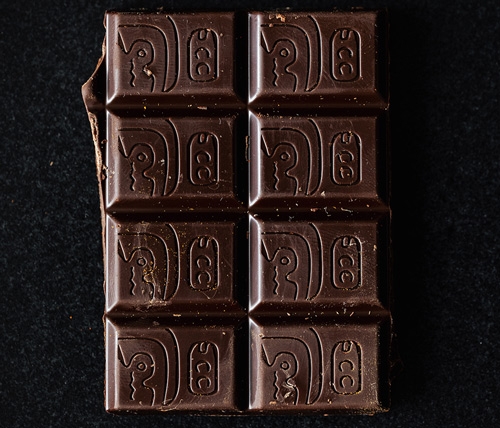
Chocolate contains a form of caffeine and releases extra anandamide, serotonin, dopamine and endorphins into your body. Hard drugs; dark chocolate!
Pharmacodynamics - How do Drugs Work?
We admit it. This is a blog with many words you may never have heard or read before. That's mainly why we try not to make it too difficult. Pharmacodynamics is the study of how drugs work. Why do you suddenly love everyone when you take XTC and why does a joint make you feel so relaxed and blissful?
It is no coincidence that in American English the translation for "Medicines" and "Drugs" is the same. The difference between the two is often referred to as illegal. So in America, drugs are both medicines and stimulants. This is because many medicines have a similar effect to drugs. There is one big difference: the purpose of a drug is to make it work as much as possible for what it is intended to do and to keep the side effects as low as possible.
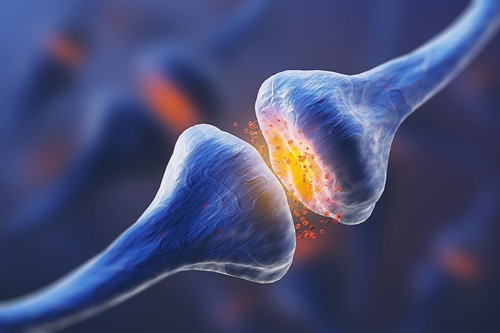
Neurotransmitters are those red dots that are exchanged between the two blue nerve cells.
Dopamine, Serotonin and Drugs – This is how your body works
Alcohol and drugs give us a certain feeling because they interfere with the neurotransmitters or receptors on which they settle. Drugs, for example, can:
- Imitate neurotransmitters,
- Help create or reduce extra neurotransmitters,
- Make them sit for longer or shorter periods at the receptor,
- Make neurotransmitters work better or worse,
- Have the opposite effect of a particular neurotransmitter.
Psychedelics such as LSD, DMT, magic mushrooms and truffles mimic serotonin. They perfectly match the receptor (5-HT2A) where serotonin normally fits. THC does the same for the receptor (CB1) where anandamide normally resides.
The ayahuasca vine banisteriopsis caapi and plants such as the Syrian rue contains a high amount of natural MAO inhibitors. These substances allow neurotransmitters to sit longer, because the substance MAO (monoamine oxidase) normally clears the receptor. This prevents serotonin (and thus DMT) from being eliminated quickly. The vine makes DMT orally active. In other words: DMT alone does not work if you take it by mouth. The MAO-inhibitors in the ayahuasca vine make sure the DMT has an effect. Because the DMT remains in the body for a long time due to the MAOI's, an ayahuasca trip lasts as long as the DMT.
MDMA, the active substance in ecstasy, temporarily increases the production of serotonin and inhibits its reabsorption. In a short period of time, you get so much serotonin in your brain that your senses are on edge, your mood is high and your sexual desires increase. But MDMA does even more. It also inhibits the reabsorption of norepinephrine and dopamine. This makes you feel alert, fresh and blissful.
Agonist and Antagonist
When talking about neurotransmitters and drugs, we should also talk about agonists and antagonists. Drugs with an agonistic effect, strengthen the effect of, for example, neurotransmitters. A good example of this is nicotine, which sits on the acetylcholine receptor. This makes you concentrate better and you feel sharper. An agonist can be seen as WD-40 or penetrating oil for the keyhole in which the right key fits even better. Antagonists have the opposite effect: they block the normal function of the receptor. Imagine that you turn the key in the lock and cut it off after the grip. Then it becomes very difficult to open the door.
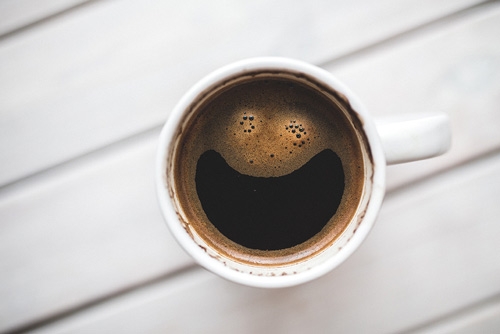
A very well-known antagonist is caffeine. It blocks the uptake of the substance adenosine at the receptor of the same name. Adenosine is produced as long as we are awake. Among other things, it gives the feeling of tiredness and thus the signal that it is time to sleep. But the effect is temporary. Adenosine is not eliminated as long as the receptor is blocked. The result? After the fifth cup of coffee, fatigue strikes back extra hard!
Types of Drugs and the way they work
We have prepared a nice chart for you to quickly see what each type of drugs does. We will again limit ourselves to some of the most widely reported mental effects.
|
Drug |
Mechanism |
Effect |
|
THC (Weed) |
Agonist on cannabinoid receptors. |
Unusual thoughts, happiness, euphoria, extra hunger, calmness. |
|
Alcohol |
Opens BK potassium channels, closes SK potassium channels, dopamine is released. GABA agonist, glutamate antagonist. |
Takes away inhibitions, relaxation, slower working brain, memory goes down, you find yourself braver. |
|
Caffeine (Coffee, Tea, Chocolate, Guarana, etc.) |
Adenosine antagonist, inhibits PDE enzymes. |
Extra alertness, less sleepiness, more energy, less hunger, insomnia. |
|
Psychedelics: Tryptamines ( such as Magic Mushrooms, Magic Truffles, DMT, Bufotenine and 5-MeO-DMT). Phenylethylamines (Mescaline from Peyote and San Pedro, 2C-B, DOI/DOM, PMA, 4-MTA). |
Partial serotonin agonist. |
Feeling of experiencing everything for the first time, inspiration, confusion, worship, fast and disorganized thoughts, trance, crazy ideas, perception more colourful and detailed, hallucinations. |
|
Ergolines (psychedelics such as LSD, LSA and Ergine) |
Partial serotonin agonist, dopamine agonist, norepinephrine agonist. |
Same as above plus dose-dependent effects. |
|
Salvinorin A (Salvia) |
Selective kappa opioid agonist. |
Convincing hallucinations, pain reduction, visual distortions, visions. |
|
Nicotine (tobacco) |
Acetylcholine agonist. |
Both relaxation and stimulation, feeling of reward, appetite suppressant, stress in withdrawal. |
|
Cocaine |
Inhibits reabsorption of serotonin, dopamine and norepinephrine. |
Euphoria, energy, increased concentration, less need for sleep. Reduces appetite. |
|
Amphetamines (Adderall, Speed, Ritalin etc.) |
Inhibits reabsorption and increases release of serotonin, dopamine and norepinephrine. |
Euphoria, energy, increased concentration, less need for sleep. Reduces appetite. |
|
MDMA (Ecstasy) |
Similar to amphetamines, but increases release of serotonin much more strongly. |
Strong euphoria, deep thoughts, stronger connection with others, heightened emotions, as if perceiving things for the first time, inspiration, satisfaction. |
|
Morphine, Heroin, Oxycodone, Codeine, Opium, Methadone, Fentanyl |
Activates all opioid receptors and inhibits norepinephrine release. |
Euphoria, calmness, sleepiness, relaxation, reduces pain. |
|
PCP, Ketamine and Dextromethorphan |
Glutamate antagonist. |
Reduces the perceived connection between self and body / self and reality. Reduces pain stimulus and has paralyzing effects. |
|
Muscimol (Flyswatter) |
GABA agonist. |
Persuasive hallucinations. Vague hallucinations, dizziness and crazy thoughts. |
|
GHB |
GABA agonist, inhibits GABA production. |
Strange mix of uplifting and relaxing effects. Euphoria, extra energy, sleepiness, calmness. |
|
4-FA / 4-FMP |
Creates additional dopamine, serotonin and norepinephrine. Also reabsorption inhibitor of all these neurotransmitters. |
Mild euphoria, strong sense of belonging in the place you are, intense experience of music and touch, strong need for contact and intimacy, confusion and anxiety, difficulty sleeping, extra stamina, dizziness. |
Disclaimer: we do not recommend the use of (illegal) drugs. This chart is intended to provide information and clarify differences between types of drugs.
Conclusion: Neurotransmitters are Natural Drugs
This cocktail of substances that your body is able to produce on a regular basis keeps you alive, makes you happy and keeps you healthy. When the balance of neurotransmitters is disturbed, for example by drug use, the body and mind work extra well or less well in a short period of time. Sometimes these effects are desirable, but not always. For example, a beer is quite nice, but after half a crate you have to take the negative effects of alcohol seriously. A shortage of serotonin after a weekend of excessive partying is also a recipe for feeling bad. This crappy mood is also known as a Tuesday dip. Want to know how it works? Read this blog.
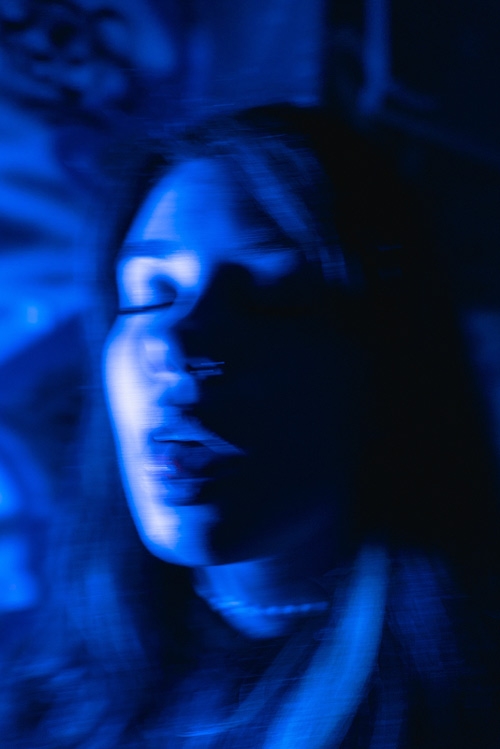
You have learned in this article that drugs play with the natural neurotransmitters. As a result, you feel temporarily different when under the influence. But sometimes that damage needs to be made up for. Just as drinking too much coffee can give you trouble sleeping, too much XTC can also cause a major dip or depression. Other times the damage is permanent. We know that alcohol causes liver damage and tobacco causes serious lung damage. Some drugs make life so good for a while that you constantly want more. Such a psychological addiction is no fun at all, because you get used to the kick that external substances give you. The idea is that you feel good and comfortable without all these substances. That's ultimately what neurotransmitters do. Is this not the case and do you need more for a long time? Then raise the alarm with your doctor, family or at a clinic. Because addiction is no fun. Be honest to yourself.